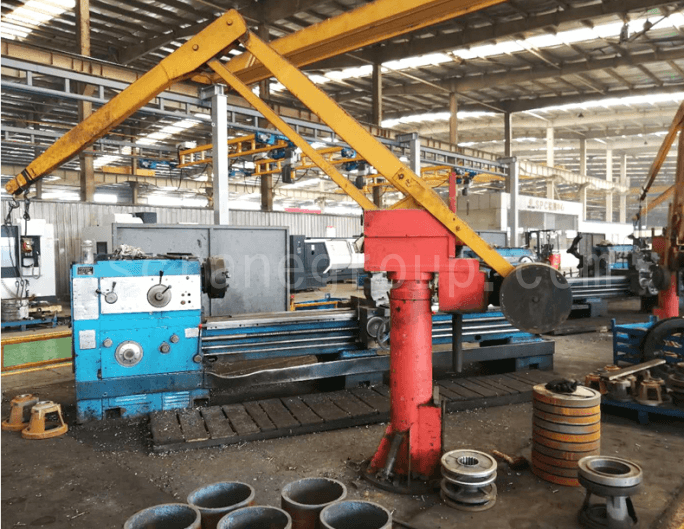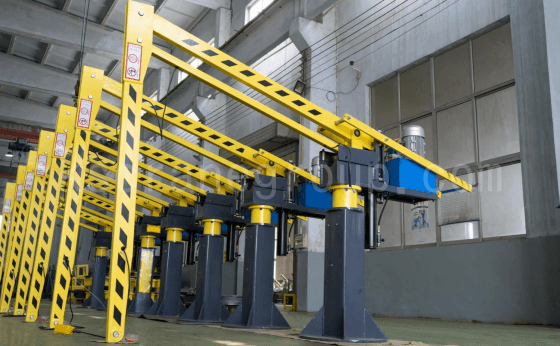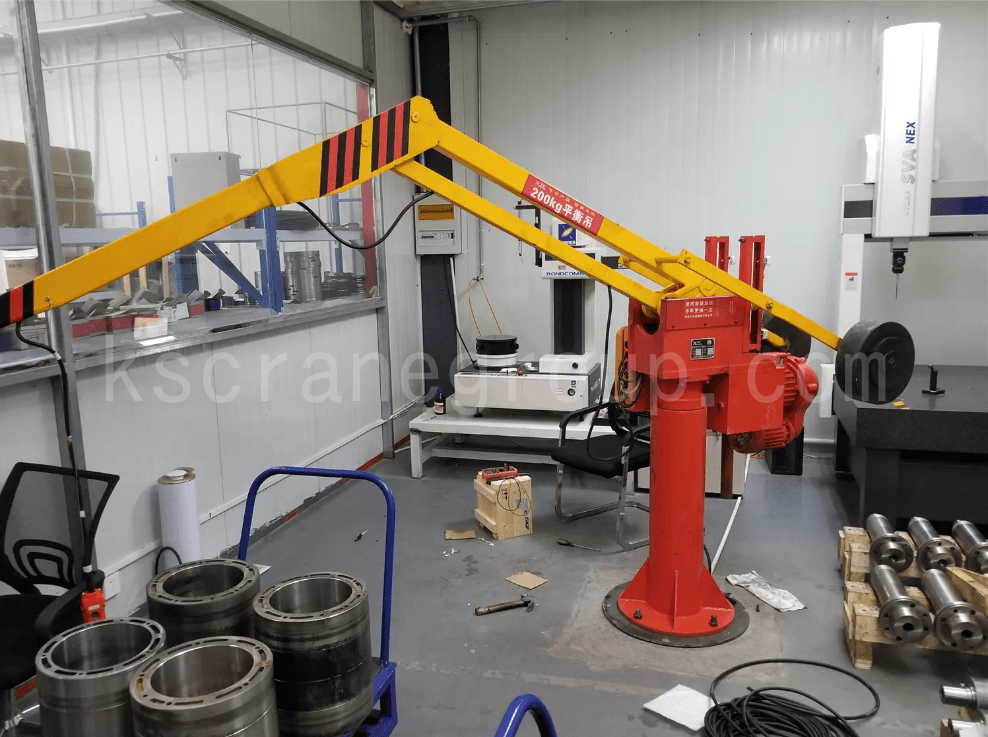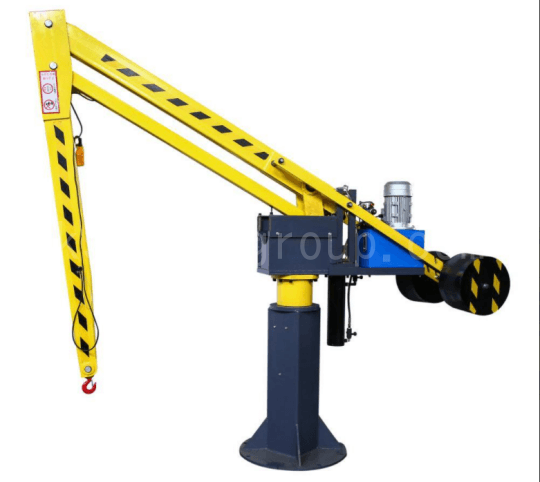
360° Rotation Balance Jib Cranes: Multi-Industry Compatible High Efficiency Material Handling Tool
Balance jib cranes are a new type of mechanical lifting equipment. They are suitable for hoisting large workpieces ranging from tens of kilograms to hundreds of kilograms. The hoisted objects can be stably positioned anywhere in the work area at any time, featuring high efficiency and more precise positioning and installation. They are widely used for hoisting and transporting parts to and from machine tools, as well as lifting intermediate components during assembly and maintenance processes. Balance jib cranes are particularly suitable for small-batch, multi-variety production scenarios, as well as special planar online cutting and conveying.
Balance Jib Cranes Specifications
- 리프팅 용량: 50kg – 1.5kg
- Working radius: Max. 3.5 meters
- 리프팅 높이: Max. 2.4 meters
- 제어 방법: Remote control
- Slewing angle: 360°
- 전원 공급: 380V/3-phase/50Hz
- Lifting mode: Electric/Hydraulic
Advantages of Balance Jib Cranes
1. Designed based on the principle of mechanical balance, with a simple structure and ingenious design.
2. Compact in size, occupying little workshop space.
3. Lighter and more flexible than large machinery, with significantly higher efficiency in hoisting small and light parts.
4. Easy to operate, close to the operator, and with higher positioning accuracy.
5. Easy to install, short installation cycle, and convenient daily maintenance.
6. Save labor, reduce manual labor intensity, and greatly improve work efficiency.
7. 360° unlimited slewing, with a large operation coverage.
8. The appearance adopts electrostatic spraying, which is elegant and has good corrosion resistance.
Balanced Jib Cranes Application Industry Scenarios
Spray Coating Industry
In spray coating production lines, balance jib cranes play a key role in the unloading, transferring and storing of workpieces after spray coating. Due to differences in equipment models and workpiece types, the conveying heights of spray coating lines vary. These versatile lifting devices can achieve precise docking with spray coating lines by accurately adjusting height and extending length, addressing core pain points such as spray coating line height adaptation, precise workpiece unloading, and compatibility with multiple types of workpieces.

Welding Workshop
In welding workshops, welding technicians operate balance jib cranes to grasp raw material pipes, easily lift and place them accurately on the welding platform via the cranes. During welding, the cranes can assist in fine-tuning the position of the pipes; after welding, the finished pipes are lifted and transported to the next process area. Labor-saving and precise material flow is achieved throughout the process, helping improve welding efficiency and quality.

Machining Industry
Balance jib cranes are widely used in the machining industry. Since most inlets of machining equipment are on the side, ordinary machinery such as overhead cranes are difficult to directly adapt to. However, these specialized lifting tools offer flexible operation, which can significantly shorten the manual movement distance of metal parts. They not only save labor and improve processing efficiency but also alleviate the factory’s recruitment difficulties, becoming an efficient tool for material handling.
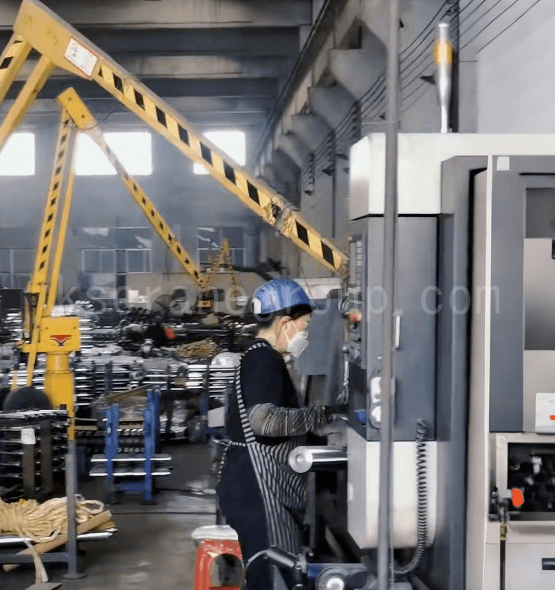
Loading Process
Balance jib crane can assist in product loading onto vehicles, easily lift and transport products, save labor, and improve loading and unloading efficiency. The lifting process is stable, enhancing operational safety. Those near the workshop doors can efficiently complete loading operations when there is loading and unloading demand; when there is no such demand, they can also be used for other processes such as machine tool loading and unloading, achieving multi-purpose use.
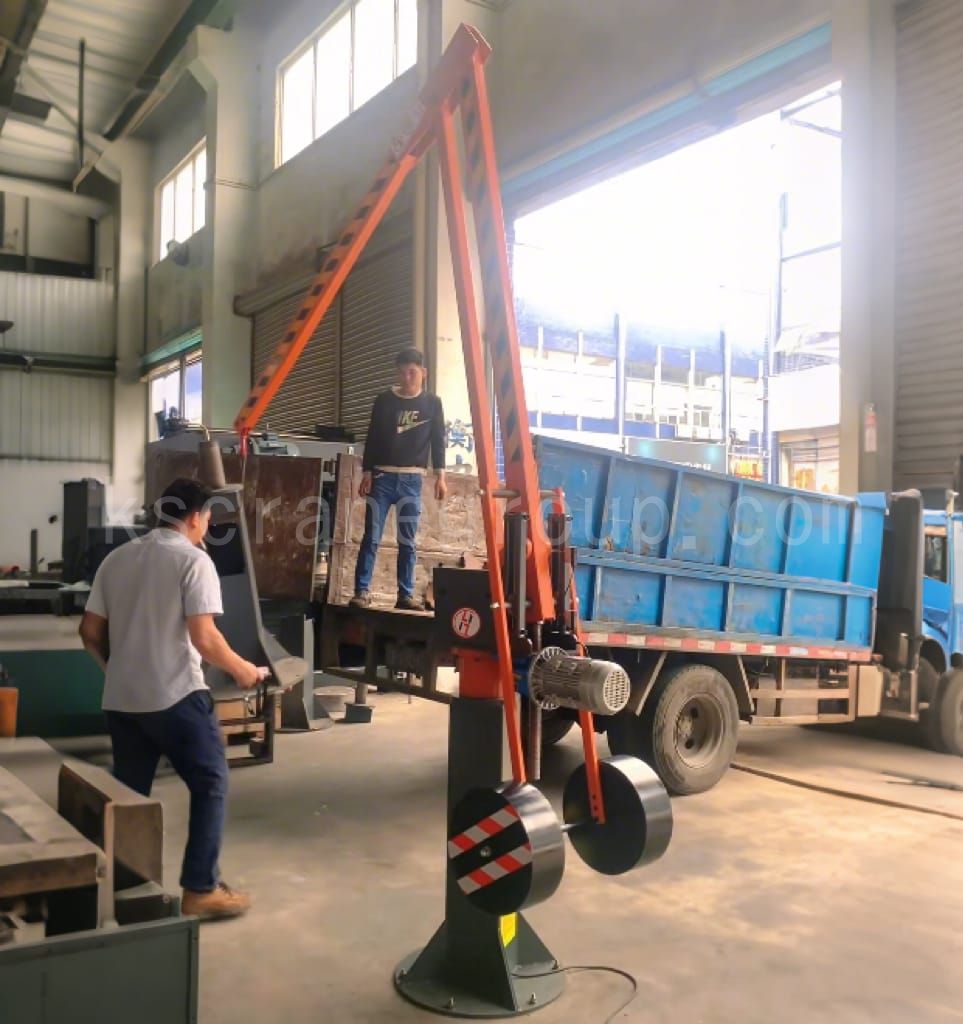
Outdoor Construction
Balance jib crane are widely used in temporary lifting scenarios during outdoor construction, mainly for the loading, unloading and connection of building materials. When there is a short-term temporary lifting demand, lifting can be carried out via balance jib cranes, enabling quick commissioning, saving labor and improving material transfer efficiency.
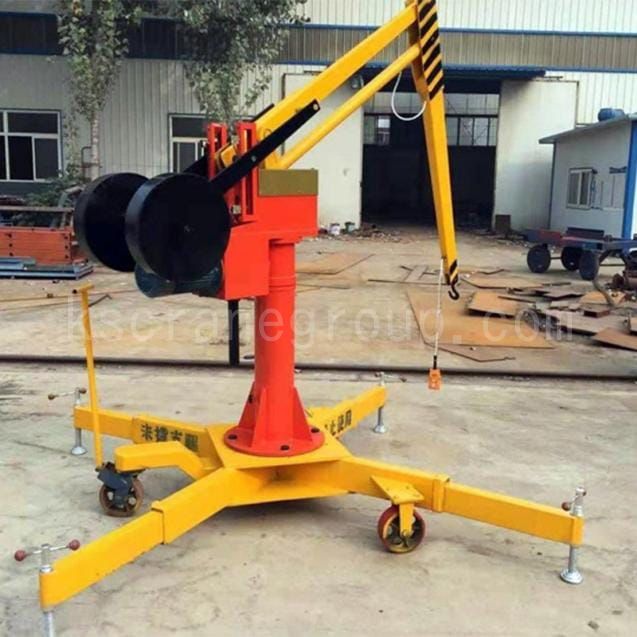
Automotive Final Assembly

Customer Case: 25% Efficiency Increase in Automotive Final Assembly Workshop with Balance Jib Cranes
프로젝트 배경
A light vehicle factory of an automobile enterprise introduced balance jib cranes to address production pain points. Due to the continuous growth of vehicle model orders, the front suspension installation station became a bottleneck for capacity improvement, characterized by cumbersome operations and high labor intensity.
Before Transformation
- Personnel: 3 workers operating collaboratively
- Operation: Manually lifting 24.6kg front suspensions, squatting to lift and repeatedly aligning holes, with each single action lasting 30 seconds and repeated over 100 times daily
- Efficiency: Production takt only 20 units/hour
- Risk: High labor intensity and high risk of work-related injuries
After Using the Balance Jib Cranes
- Equipment: Balance jib cranes achieve a 1:8 force-saving ratio, capable of lifting, hovering and precise hole alignment
- Personnel: Operable by only 1 worker
- Efficiency: Single-side installation takes only 53 seconds, with production takt increased to 25 units/hour (25% efficiency improvement)
- Benefits: Created 1.3 million RMB in benefits, reduced labor intensity and the risk of work-related injuries
연락하기
- 제품에 대한 무료 및 빠른 견적.
- 제품 카탈로그를 제공하십시오.
- 우리 회사의 지역 크레인 프로젝트.
- 에이전트가 되어 커미션을 받으세요.
- 질문이 있으시면 저희에게 연락하십시오.





































































.png?w=200&h=134)






















